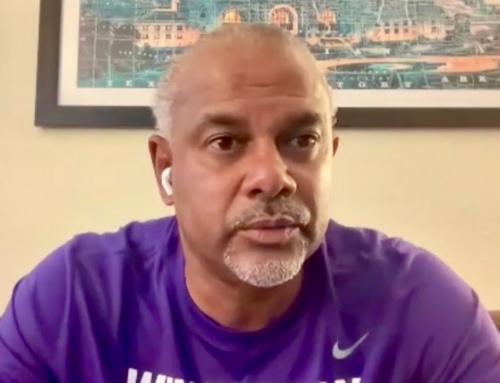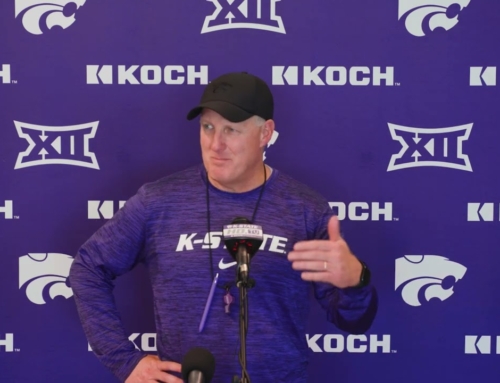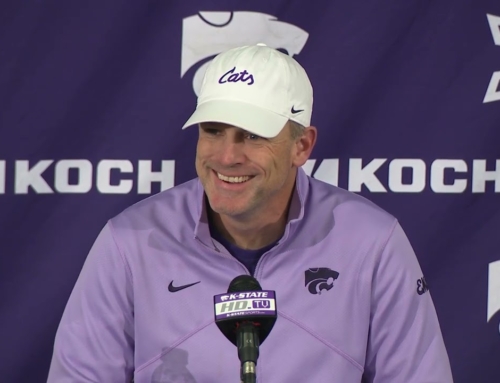
Dr. Marvin Wade (KMAN file photo)
The superintendent of USD 383 Manhattan/Ogden Schools says four key areas have been identified among parents as sources of frustration and anxiety following the first full week of classes.
Those areas include learning logs, lack of direct instruction during remote days, the process for requesting a change in instructional delivery method and the decision-making criteria for transitioning between on-site contingencies. Dr. Marvin Wade says a lot rides on guidance from state and local health officials.
“We knew that there would be some glitches along the way and there are. We are continuing to refine things like the gating criteria, continue to have meetings with health officials, K-State and the Kansas State Department of Education,” he said.
New gating criteria goes beyond just the positive rate of COVID cases, to include the trends of student absences from school. Wade says the district is also doing more to ensure students and staff are not indirectly exposed to those in COVID outbreak areas.
“We’ve been limiting some of the access of Kansas State students to USD 383 schools as one of the measures we take to keep our students safe, along with masking, the sanitizers and the thorough cleaning process that our custodians have,” he said.
Wade says the district is not ready to announce new USD 383 criteria, but reiterated confidence in the district’s hybrid learning contingency plan as the most appropriate option presently. He does say that the reopening plan is a living document that will continually be updated on the district’s website.
“We will be adjusting it along the way as we need to, to be proactive and in some instances reactive to what’s going on.”
Text from the full letter from Wade to USD 383 families and staff can be found below.
“Dear USD 383 Families and Staff,
As Building Foundations for a Strong Reopening was created over the past few months, many individuals who care deeply about the education and well-being of our students were involved.
We knew the process of transitioning from planning to implementation would provide important feedback for improvement – much like what occurred with last spring’s Continuous Learning Plan. While we are proud of the effort made thus far to get school started, we acknowledge that adjustments are -as anticipated- necessary. With COVID-19 not going away anytime soon, it is critical that we adjust to what was learned during the first week of school. Some hiccups were easily identified and overcome; others will take a bit more time. Fortunately, we now have actual Remote/Hybrid experience, as well as input from staff, students and families.
The remainder of this letter will include a brief discussion about four topics that appear to have been a significant source of frustration or anxiety during the first week of school.
These topics are learning logs; lack of direct instruction during remote days of hybrid learning; the process for requesting a change in instructional delivery method; and decision-making criteria for transitioning between On-site contingencies (i.e. Hybrid Learning and All Distance Learning).
Learning logs are required by the Kansas State Department of Education as a condition for receiving state funding.
The logs are to serve as evidence that individual students are getting the instruction they are entitled to receive. What constitutes acceptable evidence is in the process of being clarified at the state level, so -with funding at stake- USD 383 will be erring on the side of caution until the matter is resolved.
We have confirmation that logs are not required for elementary Remote Learning students if instruction is provided and attendance is taken once in the morning and once in the afternoon. For secondary Remote Learning and all Hybrid Learners during days they are not physically in our buildings, we are doing everything we can to obtain written guidance that will lessen the burden on families and staff – while meeting every auditing requirement of the state.
In the meantime, please try not to stress about the logs. We do need them completed, but we do not want people to feel pressure to fabricate or exaggerate as they complete the logs. In the near future, you will have access to Academic Supplements that provide examples and options that should help a great deal with log completion.
Experience gained from the first full week of school is helping tremendously as administration and teaching staff critically examine ways to provide instruction to students who are physically present and to those on remote days of hybrid learning. With schedules now established and limitations more apparent, we are in a better position to allocate resources in ways that are responsible and sustainable. More about these changes will be explained after details are ironed out and vetted through our internal communication process. The bottom line is that significant improvement must occur for hybrid learning to remain a legitimate longer-term option within USD 383.
With a short window between the Online Registration deadline of August 12 and the August 26 first day of school, USD 383 had to focus on stabilizing our initial staff and student assignments before we could consider requests for an instructional delivery change involving Remote/On-site or Hybrid A/B.
Now that school has begun, the attached Student Instructional Preference Change Form is available in all our schools. To make a change request, complete the form and return it to the school to which your child is assigned (often referred to as the “home school”). USD 383 recognizes families are encountering hardships and we want to do whatever we can to help, but we cannot guarantee that requests can be accommodated. We continue to strongly encourage that changes not occur until the end of the first grading period (i.e. trimester for elementary; semester for secondary).
New school “gating” criteria have been released by the Kansas COVID Workgroup of Kids to assist school districts with decisions about when and how to reopen schools. These new guidelines extend beyond positivity rate by also considering factors such as the number and trend of student absences from school.
We believe these additional gating criteria are particularly applicable to settings (such as Manhattan-Ogden USD 383) where sudden increased positivity rates can be attributable to specific demographic groups or locations. We have been working closely with Manhattan area medical experts to establish a set of local gating criteria. Our objective is to take into consideration factors unique within Manhattan-Ogden, to align with Center for Disease Control and Kansas Department of Health and Environment guidance, and to ensure the criteria are relevant, measureable and easily accessible to the community. Although we are not ready to announce new USD 383 criteria at this time, I am able to state that we are confident the Hybrid Learning contingency remains most appropriate for our current COVID-19 circumstances.
In closing, I want to emphasize that USD 383 shares your strong desire to return to in-person instruction in our buildings five days per week. However, this will not occur until we can do so safely, and we cannot do so safely until there is greater community-wide commitment to reducing COVID-19 spread. We need our entire community to stay home when sick, wear masks, wash or sanitize hands frequently, keep hands away from the face, practice social distancing, avoid mass gatherings, and be honest with health officials.
Thank you for your continued communication and commitment to the success of our children and youth.”
Marvin Wade, Superintendent
Manhattan-Ogden USD 383
The post USD 383 Superintendent says hybrid contingency plan still best plan for district appeared first on News Radio KMAN.






